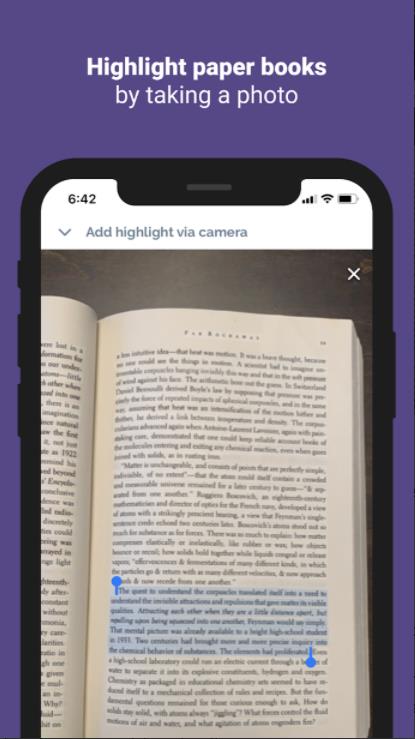Readwise has an “early access” version of their Android app available.
One of the more intriguing planned features of the app is the ability to capture highlights in physical books by taking a photo of the book.

Just another nerd.
Readwise has an “early access” version of their Android app available.
One of the more intriguing planned features of the app is the ability to capture highlights in physical books by taking a photo of the book.

Big Think is a TED Talk wannabe, and like TED it frequently features videos that are pablum for shallow thinkers (it does run extended monologues with authors about their books on occasion which is why I follow it and which makes the rest of this post so ironic).
On Sunday, April 28, Big Think outdid itself with a 4 minute video titled “Want to get more from books? Stop reading them cover to cover.”
The general tenor of the video is captured by the thumbnail which features an opened book and text that reads “Blah Blah Blah.” Because the problem with books is all of those words.
In the video, Shane Parrish of Farnam Street laments that people start reading a book and sometimes stop. Parrish recommends a contradictory approach in which the reader is supposed to essentially skim or view only select chapters, and then “extract” the basic arguments of the book without the context of reading the entire book,
It’s your job to extract what you need out of the book. And I think that extracting what you need, you can just read the table of contents, read the introduction, maybe read the conclusion, and skim a little bit. And is this a book that I want to read in its entirety? And most of the time, the answer is going to be no. A lot of the books that are published today could easily be 20 to 40 pages. You would get everything that you need out of that book. So it’s a big waste of time to read it cover to cover. But if you want to extract the general principles from the book, or the sort of like argumentation that the author’s making, you don’t need to read every little anecdote that’s put in there, or every story about Billy and Bob. You just need to know what is the framework for this argumentation?
Okay, first you don’t obviously need to read all books cover to cover. As someone pointed out in the YouTube comments, no one expects to read a cookbook from cover to cover, for example.
And, frankly, the sort of books that Parrish cites as examples–the poorly written and often nonsensical guides to “leadership”–may be the sort of books that are shallow enough that the best approach to reading them is, in fact, not to read them at all.
But there is value in reading books that goes well beyond trying to find the handful of pages that could be pulled out of context for a listicle or series of bullet points to add to yet another mini-manifesto. Understanding and even struggling with the nuances of an extended argument is an important part of learning and understanding.
The claim that you can get the same thing out of a serious book with a brief skim and maybe a chapter is the intellectual equivalent of thinking you’re going to be in top physical shape using nothing but one of those 7 minute workout apps.
There isn’t one weird trick. There aren’t just three easy steps. There are no shortcuts.